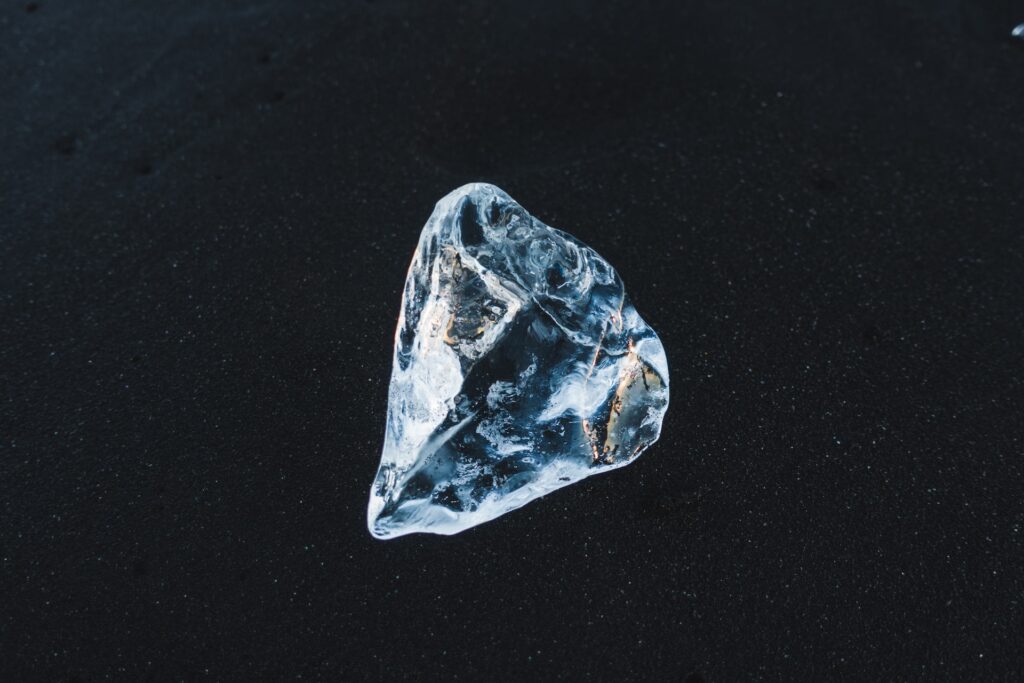Diamonds are beloved for their sparkle and natural origin, but many prefer Moissanite because it offers the same look at a lower price. To help shoppers understand the difference, the original creators of gem-grade Moissanite share what makes these gemstones unique.
Moissanite is doubly refractive, while diamonds are singly refractive. This means Moissanite is much less likely to attract grease and dirt and remain sparkly between cleanings.
Natural
Moissanite is a gemstone with unique attributes that have captured the attention of jewelry enthusiasts and scientists. It is composed of silicon carbide and was initially discovered in 1893 at the site of a meteorite impact in Arizona. Nobel Prize-winning chemists initially mistook the gems for diamonds, but further analysis revealed they were new crystals.
Natural Moissanite is extremely rare and is only found in small fragments, making it impossible to source a single-carat piece of jewelry. As a result, most of the Moissanite we see today is lab-created. Charles & Colvard was the first to patent the process of producing gem-grade Moissanite and began manufacturing it in 1998.
Because of this, many people question whether a moissanite is natural and if it’s as beautiful as a diamond. However, the answer isn’t as simple as a “yes” or a “no.” It depends on various factors, including how a stone is cut and its appearance.
The most significant difference between a diamond and a moissanite is how they sparkle. Moissanite refracts light differently than a diamond, giving it a more rainbow-like sparkle.
Moissanites also generally weigh less than a diamond of the same size. This may not be noticeable to the untrained eye, but a high-precision jewelry scale will easily distinguish between the two stones.
Lab-Created
Unlike diamond imitations like cubic zirconia, Moissanite isn’t made of lab-grown carbon. Instead, it is a unique gemstone known as silicon carbide. While some jewelry shops carry Moissanite, it is harder to find than other precious stones in brick-and-mortar stores. The rock is also quite different from a natural diamond in terms of sparkle, color, refraction, and price.
Moissanite’s sparkle results from its high refractive index and how it separates white light into its spectral colors. This process is called dispersion. In comparison, lab-created diamonds have a lower refractive index and do not possess the same intense sparkle as moissanites.
Lab-created moissanites are more affordable than both natural and mined diamonds. They are available in various colors, including a colorless version that looks nearly identical to diamonds in the D-F range. In addition, a yellowish version of the gem is also available for those interested in more traditional-looking gemstones that look best in yellow or rose gold settings and vintage styles.
Moissanite is a fascinating gem; the question is, Is a moissanite diamond real? It often arises due to its striking resemblance to diamonds, yet it’s a distinct gemstone known for its brilliance and unique properties.
Moissanite is also an excellent option for those concerned about ethically sourced gemstones. Most lab-created moissanites are marketed as being free of inclusions and blemishes – this is called clarity. This is in contrast to diamonds that are only considered “flawless” if they are graded VS by a jeweler under 10x magnification.
Scratch-Resistant
The most popular gemstone on the planet is a natural diamond that takes billions of years to develop from carbon-containing fluids trapped within the Earth’s mantle. But if you are looking for an affordable and eco-friendly alternative, a lab-created diamond has become the most sought-after option for many customers.
Moissanite is incredibly durable and rugged, so it is not prone to scratching, breaking, or losing its sparkle — unlike most other diamond simulants. It is also less likely to attract grease or dirt, making it easy to keep clean and sparkling between professional cleanings.
Because of its durability, Moissanite is ideal for engagement rings and bespoke jewelry designs. It is an excellent choice for couples who want to invest in jewelry that will last a lifetime without spending the thousands of dollars necessary for an Earth-mined diamond or other gems with higher price tags.
Moissanite is available in various colors similar to “Near Colorless” (G-H-I) and colorless diamonds, so you can replicate your favorite styles and looks with a Moissanite stone. However, it should be noted that moissanites do not have the icy white look of a perfectly colorless diamond and may appear slightly yellow or green under certain lighting conditions. This shouldn’t be a concern for most buyers, but some might prefer a more pure-looking diamond.
Affordable
Moissanite is an affordable option for those who want a beautiful diamond alternative. It is also sustainable and eco-friendly as it does not have to be mined from the Earth like a regular, naturally occurring diamond. It can be found online and in many jewelry stores, including Whiteflash.
Moissanite’s transparency and colorless appearance make it look similar to a diamond. Even to the most discerning jewelry enthusiasts who have seen many diamonds and moissanite side-by-side, it can take time to tell the difference. A gemologist can use specialized equipment to distinguish the stones, but most of us can easily see that a diamond looks different than Moissanite. Moissanites are composed of silicon carbide, a material very different from diamonds, and disperse light slightly differently.
Moissanite is known for its diamond-like brilliance, but it also differs from a diamond in several other attributes. Technically, it is considered a diamond simulant, meaning it is a substance that looks like a diamond but does not have the same chemical properties or physical characteristics as a natural diamond. Other common diamond simulants include cubic zirconia. Unlike cubic zirconia, however, Moissanite has no negative environmental impacts and is an excellent alternative to mined diamonds. It’s a fantastic choice for those who want a beautiful, ethically sourced gemstone that is still stunning to the eye.







